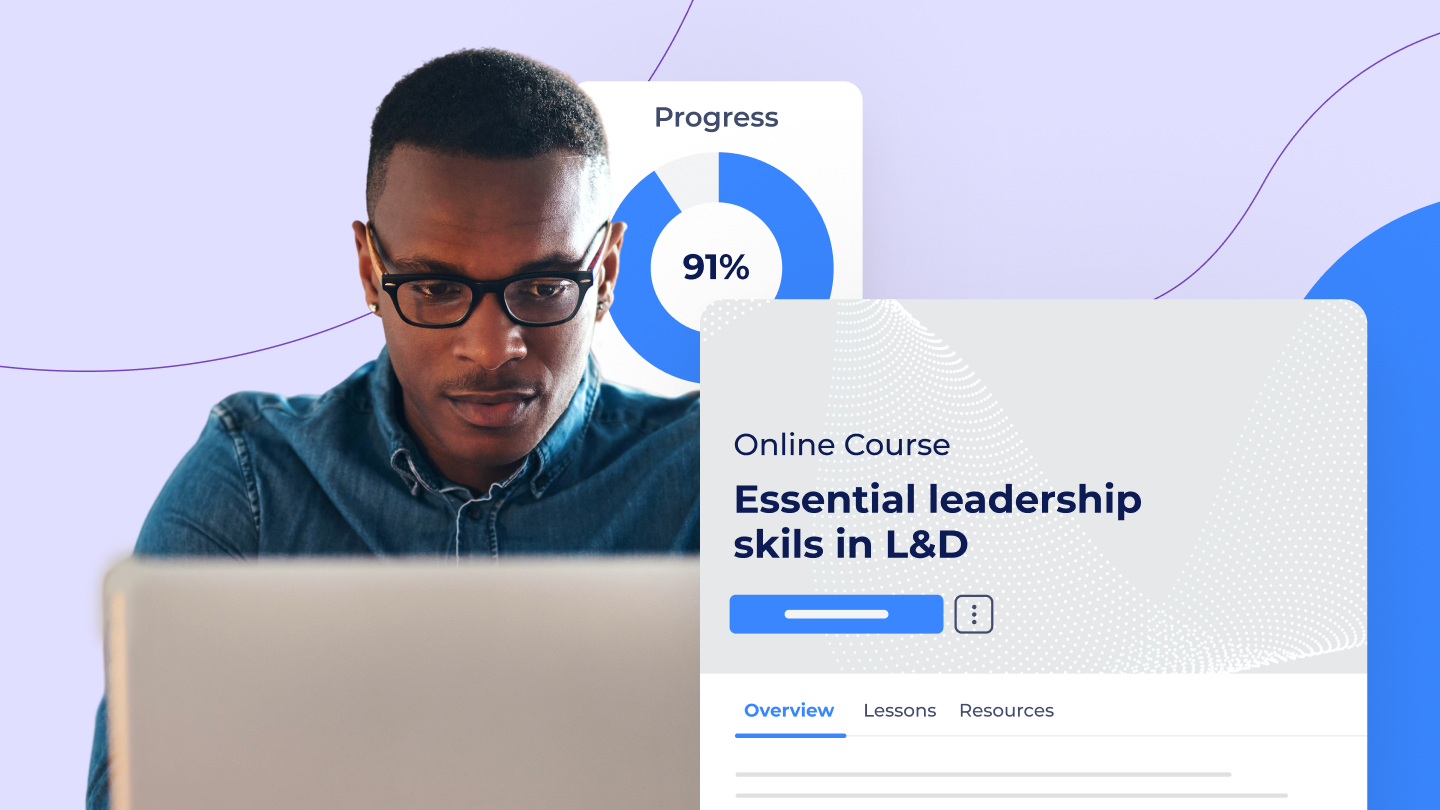The future of work waits for no one. To keep pace with industry innovations and surpass competition, your employees must have the skills to adapt quickly. The impact of training effectiveness shows up in employee performance—and in the bottom line. But between the desire to equip your workforce and the reality of successful implementation lies a hurdle course of challenges.
What are common roadblocks that can hinder training effectiveness?
Lack of employee engagement: Let's face it, many traditional training methods can be dry and uninspiring. Disengaged trainees struggle to retain information and are less likely to apply new skills on the job.
Difficulty integrating training with daily work: Finding the time to carve out space for learning and development can be tough, especially for busy employees. Even tougher is ensuring they can seamlessly integrate their newfound knowledge and skills into their daily workload.
Ineffective methods: A one-size-fits-all approach just doesn't cut it. Generic training that fails to consider individual learning styles or address specific job needs often falls short of expectations.
Measuring the value of training: Demonstrating the return on investment (ROI) for programs can be difficult. Without clear metrics to track progress and impact, it's hard to justify the time and resources required.
These challenges can leave you wondering if your training efforts are making a difference. In the next section, we'll explore three key strategies to address training effectiveness and ensure your programs are propelling your workforce, and your business, forward.
Training best practices
1. Ensure accuracy & relevance
Learners will be most excited about training relevant to their day-to-day work or applicable to their career goals. Updated content is key to remaining relevant while ensuring learning aligns with overall business objectives.
Whether your learners train daily, weekly, or annually, perform regular content audits to identify which learning materials need updating. Leveraging a robust training management system enables you to efficiently store content, and then revisit it to make updates.
Go beyond ensuring your course content is up to date and further improve its relevance by personalizing the eLearning you offer. Make use of LMS features that enhance the learner experience, such as:
individualized learning paths
content targeted by the learner role
content localized to the learner's region or country
For efficient content updates, consider tools powered by Generative AI.
2. Invite learner feedback
Many L&D professionals conduct user testing before releasing eLearning courses. They may also ask for learner feedback, you're digging into the impact on the organization and on learners' overall success.
Consider asking learners to provide deeper feedback on the content and on whether and how they apply what they’re learning in their work. There will inevitably be learners who notice outdated or unclear content. Some might even take issue with a quiz question or response. These are all valuable insights.
Soliciting feedback may create more work, but it will pay off by improving the quality, and thus the effectiveness, of the training. In fact, simply by involving learners in improving the training, you're likely to see an increase in training effectiveness. To further enhance training effectiveness, consider gathering feedback from managers as well. Managers can provide valuable insights into how well the training prepares employees to apply their new skills on the job.
Managers' observations can reveal if the training content aligns with real-world scenarios and challenges faced by employees.
Their feedback can help assess whether the training equipped employees with the necessary knowledge and confidence to perform their tasks more effectively.
By incorporating feedback from both learners and managers, you can gain a well-rounded perspective on the training's impact and make informed decisions about improvement.
3. Mix it up with new content formats
It's easy to get into a rut, producing courses using the same templates and the same training approach. But learners are more likely to engage with and remember training content if they can access it in a variety of formats.
Spark engagement with new approaches. For example, add eLearning elements to reinforce instructor-led training, creating a blended learning solution. Incorporate short videos and other microlearning elements into your LMS-based training library to provide learners with multimodal training options. Ensure learners can access content on mobile devices so they can easily refer to training, whether they're at home or on the job.
Adding options that make learning appealing and easy to use—no matter when or how the learner accesses it—is a stellar way to boost training effectiveness.
Read the blog: Understanding Blended Learning: A Modern Approach to Employee Education
What are the business benefits of effective training?
Investing in effective training isn't just about checking a box. When done right, it can have a significant impact on your organization's success. Here are just a few of the business benefits you can expect to reap:
Boosted employee performance: Well-trained employees are more knowledgeable, confident, and skilled. This translates into higher productivity, improved accuracy, and better problem-solving abilities. According to research, about 6 out of every 10 employees think training helps them perform better at their job. While 51% believe training boosts their confidence and 41% say it helps improve time management skills.
Enhanced customer satisfaction: A skilled and knowledgeable workforce is better equipped to deliver exceptional customer service. Through training, employees gain the ability to address customer needs effectively, leading to higher satisfaction and loyalty.
Reduced costs: Training can help minimize errors and rework, ultimately saving your organization money. Additionally, a well-trained workforce is less likely to experience safety incidents, further reducing costs associated with accidents and injuries.
Improved employee engagement and retention: Employees who feel valued and invested in by their company are more likely to be engaged and stay with the organization. Training opportunities demonstrate a commitment to employee development, fostering loyalty, and reducing costly turnover.
Increased innovation: A culture of continuous learning fosters creativity and innovation. By equipping employees with new skills and knowledge, training can spark fresh ideas and problem-solving approaches, leading to a competitive edge for your business.
Take training effectiveness to the next level with an AI-powered LMS
Studies have shown that employees who engage in learning opportunities during work hours experience significant reductions in stress and increases in productivity. Research suggests these individuals report feeling nearly 50% less stressed and 40% more productive than those who do not participate in workplace learning initiatives.
By improving your training offerings, you're both providing what they want and encouraging growth, increasing the likelihood they'll remain with your organization. Accurate, engaging training is the most effective kind and as your effectiveness improves, results are sure to follow.
Here are a few ways you can elevate your training effectiveness by delivering impactful eLearning at your organization, via the Absorb LMS platform:
Empower your employees in their development with personalized learning paths
Make your LMS a desirable destination for learners, not just a requirement
Provide relevant learning experiences with relevant, timely, and accessible content
Absorb LMS empowers organizations to improve training effectiveness. Book a demo to find out how.








